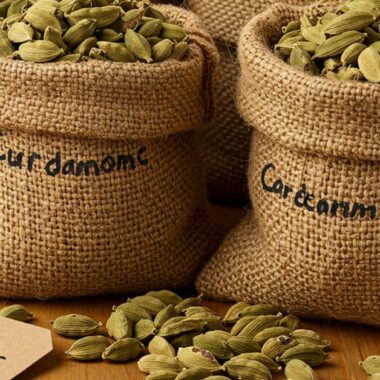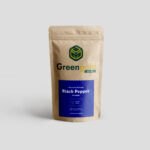Climate change is disrupting traditional cardamom farming, bringing unpredictable rainfall, rising temperatures, and increased pest attacks. 🌦️🔥 To combat these challenges, researchers are developing climate-resilient cardamom varieties that can withstand extreme weather while maintaining high yields. 🚜🌿
Let’s explore how scientists and farmers are working together to secure the future of cardamom farming! 🌱✨
🔬 1. Identifying Naturally Resilient Cardamom Strains
Not all cardamom plants react the same way to climate changes. Scientists are:
✅ Studying wild cardamom varieties from different regions 🌍
✅ Selecting plants that survive extreme heat, drought, or excess rain 🌦️
✅ Crossbreeding strong varieties to create resilient hybrids 🌱
🌿 Benefits:
🔹 Preserves natural genetic diversity 🌳
🔹 Helps farmers grow cardamom in unpredictable climates 🌡️
🔹 Reduces crop failures & ensures stable yields 📈
🚀 Result: Stronger cardamom plants that thrive in tough conditions! 💪
💧 2. Developing Drought-Tolerant Cardamom Varieties
Many regions are facing less rainfall & prolonged dry seasons. Scientists are working on:
✅ Breeding varieties with deeper roots to access underground water 💦
✅ Enhancing water retention in leaves to reduce moisture loss 🍃
✅ Encouraging mulch-based farming to trap soil moisture 🌾
🌿 Benefits:
🔹 Keeps crops alive during drought periods ☀️
🔹 Reduces the need for frequent irrigation 🚰
🔹 Saves farmers money on water costs 💰
🚀 Result: Cardamom that thrives even with limited rainfall! 🌿💧
🦟 3. Strengthening Pest & Disease Resistance
Warmer temperatures increase pest infestations & fungal diseases. To combat this, scientists are:
✅ Identifying pest-resistant wild cardamom species 🦟
✅ Introducing natural immunity genes to fight infections 🧬
✅ Developing eco-friendly biopesticides for safer farming 🛡️
🌿 Benefits:
🔹 Reduces the need for chemical pesticides 🚫
🔹 Prevents crop losses due to diseases like cardamom mosaic virus 🦠
🔹 Supports organic and sustainable farming methods 🌎
🚀 Result: Stronger, disease-resistant cardamom plants! 🌱🦠
🌡️ 4. Heat-Resistant Cardamom for Rising Temperatures
With global temperatures rising, traditional cardamom crops struggle under heat stress. To fix this, researchers are:
✅ Breeding heat-tolerant strains that withstand high temperatures 🔥
✅ Modifying leaf structures to reduce water loss 🍃
✅ Encouraging mixed farming with shade trees 🌳
🌿 Benefits:
🔹 Protects crops from excessive heat 🌞
🔹 Ensures stable productivity even in hot climates 📈
🔹 Improves overall plant health 🌱
🚀 Result: Cardamom that flourishes even in hotter regions! 🌡️🌿
🧪 5. Using Biotechnology to Speed Up Development
Traditional breeding takes years to create a new resilient variety. Biotechnology speeds up the process by:
✅ Using genetic markers to identify strong traits faster 🧬
✅ Tissue culture propagation to mass-produce resilient plants 🌿
✅ Editing plant DNA to improve climate resistance (non-GMO techniques) 🛠️
🌿 Benefits:
🔹 Develops new varieties in a shorter time ⏳
🔹 Ensures precision in selecting the best traits 🎯
🔹 Produces healthier and more adaptable plants 🌎
🚀 Result: Faster development of superior climate-resilient cardamom! 🌱⚡
🌍 The Future of Cardamom Farming in a Changing Climate
By combining natural selection, scientific breeding, and modern biotechnology, researchers are creating climate-resilient cardamom varieties to ensure a sustainable future for farmers. 🌿💚
💡 Looking for premium-quality cardamom? Shop at Greengold Guide for the best organic & sustainable cardamom! 🌿✨












